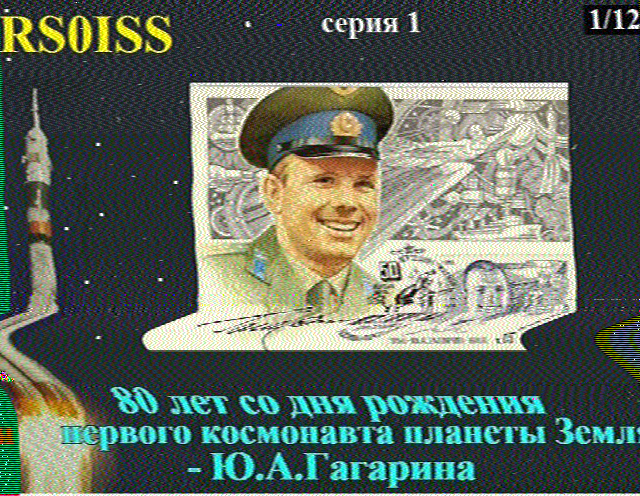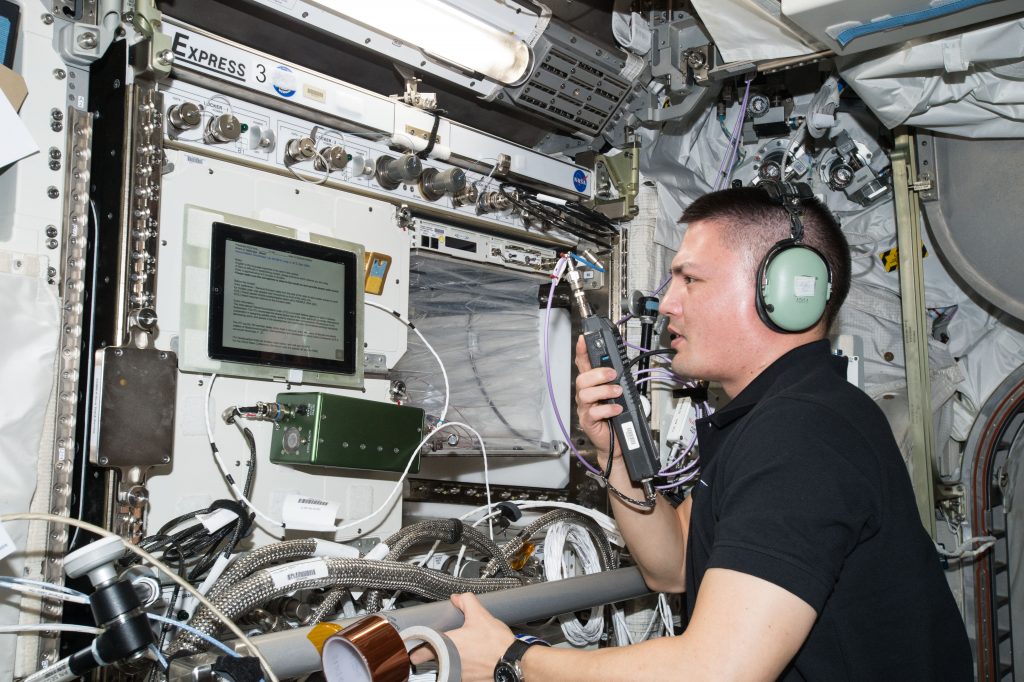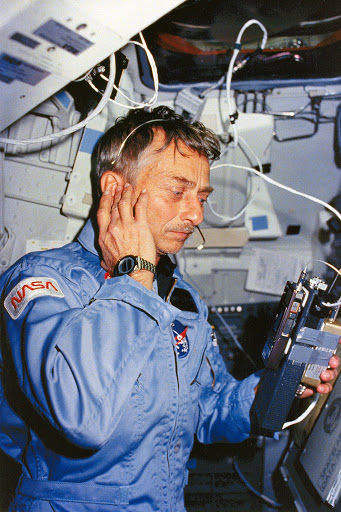When astronaut Owen Garriott, W5LFL (sk), keyed down his 2 meter transceiver aboard the space shuttle Columbia on December 1, 1983, he became the first person to use Ham radio from space. Garriott’s operation opened the door for Ham radio to be a part of manned space flight. Those 290 contacts he made also opened the door for Ham radio to be used as an educational outreach tool for thousands of schoolkids worldwide, and as recreation for licensed astronauts onboard various spacecraft.
The allure of talking to an amateur radio operator in space is obvious: It’s the ultimate DX contact. In this blog, we’ll discuss the odds of you speaking to an astronaut aboard the International Space Station (ISS) and other ways you can interact with the ISS via Ham radio.
Current Gear Aboard the ISS and Programs it’s Used for
You might think that the ISS would require fancy communications equipment, but the onboard Ham radio station is all commercially available gear that any Ham can buy. Currently, the station consists of two Ericsson MP-X handhelds, a Kenwood TM-D700, and a Kenwood TM-D710. There are four Ham radio antennas mounted in different locations on the ISS to provide some redundancy, as well as help ensure an antenna will have good coverage of the Earth. The radios are capable of running up to 25 watts maximum, but normally are set to 5 watts. The radios support FM voice communications, an APRS digipeater, and SSTV transmissions.

Astronauts Onboard
As of July 2020, the only licensed Ham radio operator onboard the ISS is Commander Chris Cassidy, KF5KDR.
How You Can Interact with the ISS via Ham Radio
Here’s a video from NASA of Doug Wheelock, KF5BOC, aboard the ISS in 2010 making radio contacts. While there have been many Hams in space over the years that have used Ham radio for recreation, they often do not have much time to do so. As you can imagine, an astronaut’s schedule is pretty busy, and they often prefer to use their personal time for other things. The odds of you being able to talk in real time via Ham radio to an astronaut, as of this writing, are pretty slim. However, there are other ways you can interact with the ISS via Ham radio.

- Listening to Educational Contacts. Astronauts aboard the ISS regularly talk with schools and community groups through the Amateur Radio on the International Space Station (ARISS) program. ARISS is a multinational nonprofit organization that facilitates these contacts with schools worldwide and encourages the study of STEM topics (science, technology, engineering, and math). If a school contact is occurring when the ISS is passing overhead, you can listen in on the transmissions from the ISS in real time! (You will be unable to hear the students transmitting up to the ISS, however). You can listen to the ISS downlink on 145.800 MHz FM. Follow @ARISS status on Twitter for the latest updates or visit ariss.org.
- Download slow-scan television (SSTV) images. The Russian crew aboard the ISS have transmitted images via slow-scan television several times in recent years. All you need is an audio interface between your radio and your computer and software to decode the images. Windows users can use MMSSTV, while Mac users can use the SSTV app. Apps are also available for mobile phones and tablets.
- Using the ISS digipeater. One of the Ericsson handhelds functions as a digipeater, or a digital repeater, on 145.825 MHz. Using packet, you can make two-way contacts with other Hams as the satellite passes overhead. From your location, any station that also has the ISS above their horizon is a potential contact waiting to happen. Many satellite operators use the ISS to aid in their collection of grid squares. There is a definite thrill to making contact with a station via a piece of Ham radio hardware on the ISS. To do this, you need a 2 meter FM transceiver, a packet radio interface, a decent 2 meter antenna, and a way to track the ISS. AMSAT-UK has a web page for beginners on how to use packet radio to contact the ISS. Patrick Stoddard, WD9EWK, won the QST Cover Plaque Award for his December 2018 article on working the ISS (and other digipeaters) via packet radio. You can read his article here. JoAnne Maenpaa, K9JKM, wrote this excellent article on packet radio and the ISS for the 2012 AMSAT Symposium.
Finally, here’s a videoof John Brier, KG4AKV, making contacts through the ISS digipeater back in 2017 using his Kenwood TH-D72A handheld transceiver.

Owen Garriott, W5LFL, became the first Ham to transmit from space in December 1983, aboard the space shuttle Columbia. He had been trying to use Ham radio in space for nearly twenty years. He opened the door for many Hams and Ham radio-based educational outreach programs from space. [Photo courtesy NASA]
What Gear Do You Need?
You don’t need too much gear to have success hearing the ISS. A decent home vertical and 2 meter FM radio will hear most passes of the ISS. Be sure to open your squelch just before the beginning of the pass so you can hear as much of it as possible. The ISS digipeater is very strong; many people, myself included, have successfully made packet radio contacts with the Kenwood TH-D72A HT with built-in APRS and packet, and a stock “rubber duck” antenna, but those results are uncommon and should not be expected regularly. If you have a different 2 meter radio, you will need a TNC (Terminal Node Controller) to send and receive packets, or software and a digital interface. AGWPE and UISS are the two most common packet radio software packages out there. If an astronaut makes themselves available for a real 2-meter FM contact, directional antennas with azimuth and elevation control will improve your chances for success.
There are plenty of ways you can connect with the ISS using Ham radio. With some practice and a bit of planning, you will be able to monitor the ISS as it passes overhead and soon make digital contacts through the onboard digipeater. You may be one of the fortunate ones who talks with an astronaut one day, netting the ultimate DX contact. Best of luck connecting with the ISS!
Thanks to Patrick Stoddard, WD9EWK, for his assistance.

